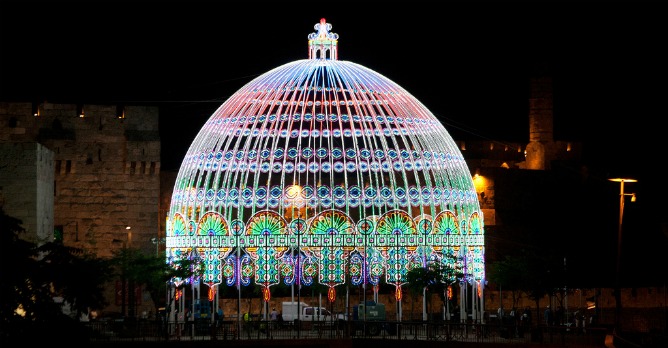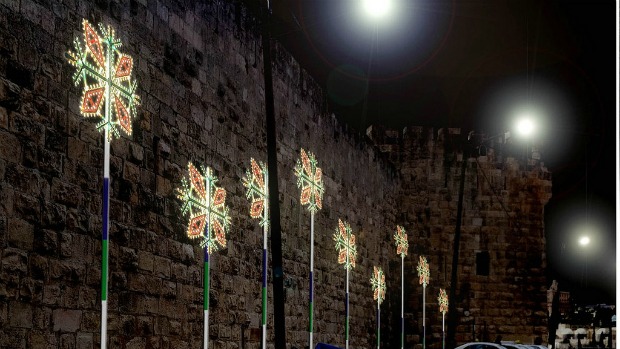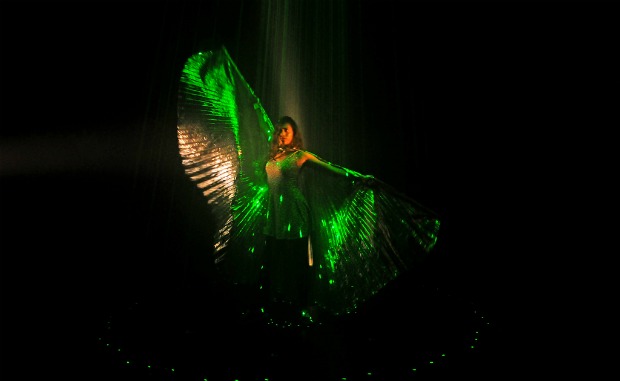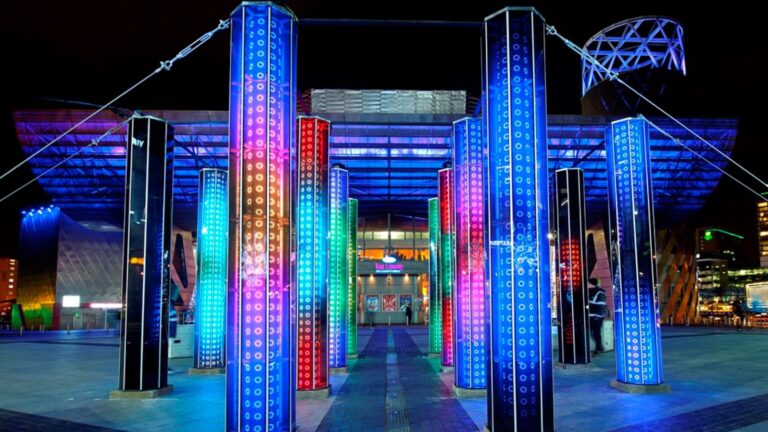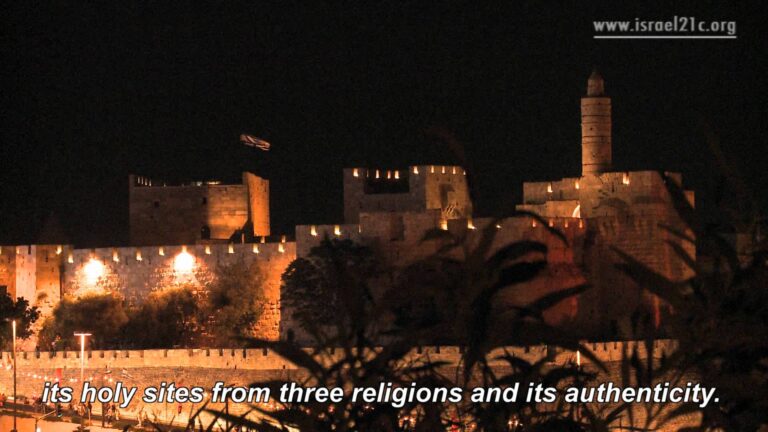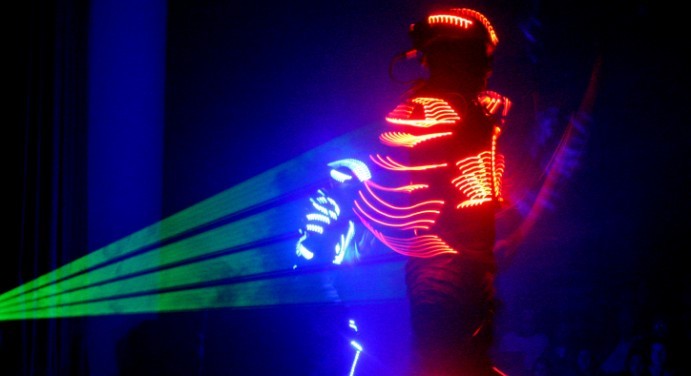My friend Barbara and I were standing at Jaffa Gate facing the Cupola – an 82-foot-high domed structure by Italy’s Luminarie De Cagna – at the magic moment when night fell and its 63,000 electric candles came alive with tiny points of colored light.
It was opening night of the Jerusalem Festival of Light in the Old City, the fourth such event to bring international and local light artists’ sculptures, performances, projections and displays into the inimitable atmosphere of the ancient neighborhood.
Many people go for four nights to explore each of the four routes – orange, blue, green and yellow. Barbara and I opted for orange (my favorite color) and spent the next two hours on foot taking in some pretty awesome spectacles in the pleasant night air.
Our route was, cleverly, sponsored by the Orange wireless communications company, which presented a show called “Clear” in Batei Machase Square, an area of the Jewish Quarter built in the 19th century. The show featured colossal projections on the Rothschild House, which functioned as an Arab officers’ school between 1948 and 1967 and now houses an elementary yeshiva. The show was accompanied by a guy in heavy gloves playing a giant musical instrument called an Earth Harp. The strings were attached to a rooftop way over yonder above our heads.
At one point a reporter approached to ask our impressions of the free event. I told her that it brings a refreshing and fun perspective to a part of town that I might not otherwise care to explore at night. The normally dark cobblestoned alleyways were animated with polyglot tourists enjoying the colorful installations and pulsing music. Festival-goers were expected to number about 250,000 despite the fact that the Israel Opera Festival was going on at the same time.
My evening ended with an outdoor performance on light and electricity by Mayumana, a quirky high-energy Israeli modern dance troupe. Snaking my way back to Jaffa Gate to catch a bus home around 11:00, I discovered that this was when the crowd was truly starting to arrive. It was going to be a long and lively night in Jerusalem.
Some other things you can see through June 14:
- – Ocubo: A Portuguese interactive virtual “ball game” where participants control the weather.
- – Key Frames: The French group Laps used LED light pipes to create more than 60 characters, animated by choreographic light and music.
- – Cathedral: Developed by Raoul Hurwitz from Estonia, this installation was made entirely out of salvaged old windows.
- – Light Benches: A project of the German architect Bernd Spieker, these illuminated benches invited passers-by to rest and take in their surroundings.
- – Faces of Jerusalem: The German artist Jan Ising’s three-dimensional exhibit presents a collection of projected photos of the people of the city, taken by Ising and Bartosh Navarra during April.
- – The Enlightened Magic Circus: A magical journey through the Christian Quarter featuring 10 illuminated circus scenes that the German artist Nicola Dicke painted using her own special technique on slides.
- – Shadows Story: Inside the Cardo, a restored Roman marketplace in the Old City, Israeli artist Adi Paz-Faingold presented a light-and-shadow version of “Hansel and Gretel.”
- – Afterlight: A Dutch creation in the Cardo using dynamic photographs projected on the wall that created optical illusions accompanying an animated journey into the human brain.
- – Pitaya: A floating display of pollen and jellyfish made entirely out of plastic pipes and lit with LED bulbs, Pitaya hung in the air above the audience.
- – Dragons and other animals illuminated by innovative light technology by the Mystorin Theater Group celebrated the Chinese Year of the Dragon.
Fighting for Israel's truth
We cover what makes life in Israel so special — it's people. A non-profit organization, ISRAEL21c's team of journalists are committed to telling stories that humanize Israelis and show their positive impact on our world. You can bring these stories to life by making a donation of $6/month.





